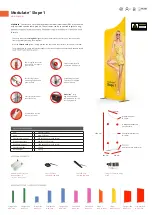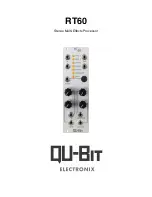
26
12.1 Noise
Noise levels can vary widely from machine to machine depending on conditions of use. Persons
exposed to high noise levels, even for a short time, may experience temporary partial hearing
loss and continuous exposure to high levels can result in permanent hearing damage. The
Woodworking Machines Regulations require employers to take reasonably practicable measures
to reduce noise levels where any person is likely to be exposed to a continuous equivalent noise
level of 90 dB(A) or more over an 8 hour working day. Additionally, suitable ear protectors must
be provided, maintained and worn.
Machines identified as generating unhealthy noise levels should be appropriately marked with a
warning of the need to wear hearing protection and it may be necessary to designate particular
areas of the workplace as ‘Ear Protection Zones’. Suitable warning signs are specified in the
Safety Signs Regulations 1995. It may be necessary to construct a suitable enclosure, in which
professional advice should be sought.
Further information and references to practical guidance are contained in free leaflets available
from The Health & Safety Executive.
The list below outlines some of the variables that directly affect the noise level of the machine:
VARIABLE
RELEVANT FACTOR EFFECT
Timber
Species
Hard stiff timber can mean more noise (approx. 2dB(A)
difference when cutting oak and pine) & more transmitted
noise.
Width
Wide work pieces radiate noise over a greater area
increasing the noise level.
Thickness
Thin workpieces generally vibrate more increasing the
noise level.
Length
Long workpieces transmit noise away from the cutting area
towards the operator.
Tooling
Width of Blade
This affects the windage noise and increases roughly in
proportion to the width of cut.
Blade Sharpness
Dull and worn blades exert more force on the timber thus
creating more noise.
Balance
Out of balance blades mean vibration and changes in
cutting conditions, resulting in increased noise levels.
Extraction
Air
Velocity/
System Design
Resonant conditions can lead to high noise levels,
excessive turbulence and chip impact can increase noise
levels substantially.
The following noise levels were recorded at a distance of one metre from the machine (operator
side), using varying feed rates and depths of cut.
OPERATION
TIMBER
DEPTH OF CUT
NOISE LEVEL dB(A) @
1M
None
None
No load
76
Surfacing
Softwood 75mm wide
-
80
Surfacing
Softwood 300mm wide
2mm
86
Surfacing
Hardwood
2mm
84
Thicknessing
Softwood 77mm wide
2mm
87
Thicknessing
Softwood 300mm wide
2mm
90
Thicknessing
Hardwood 75mm wide
2mm
87















































